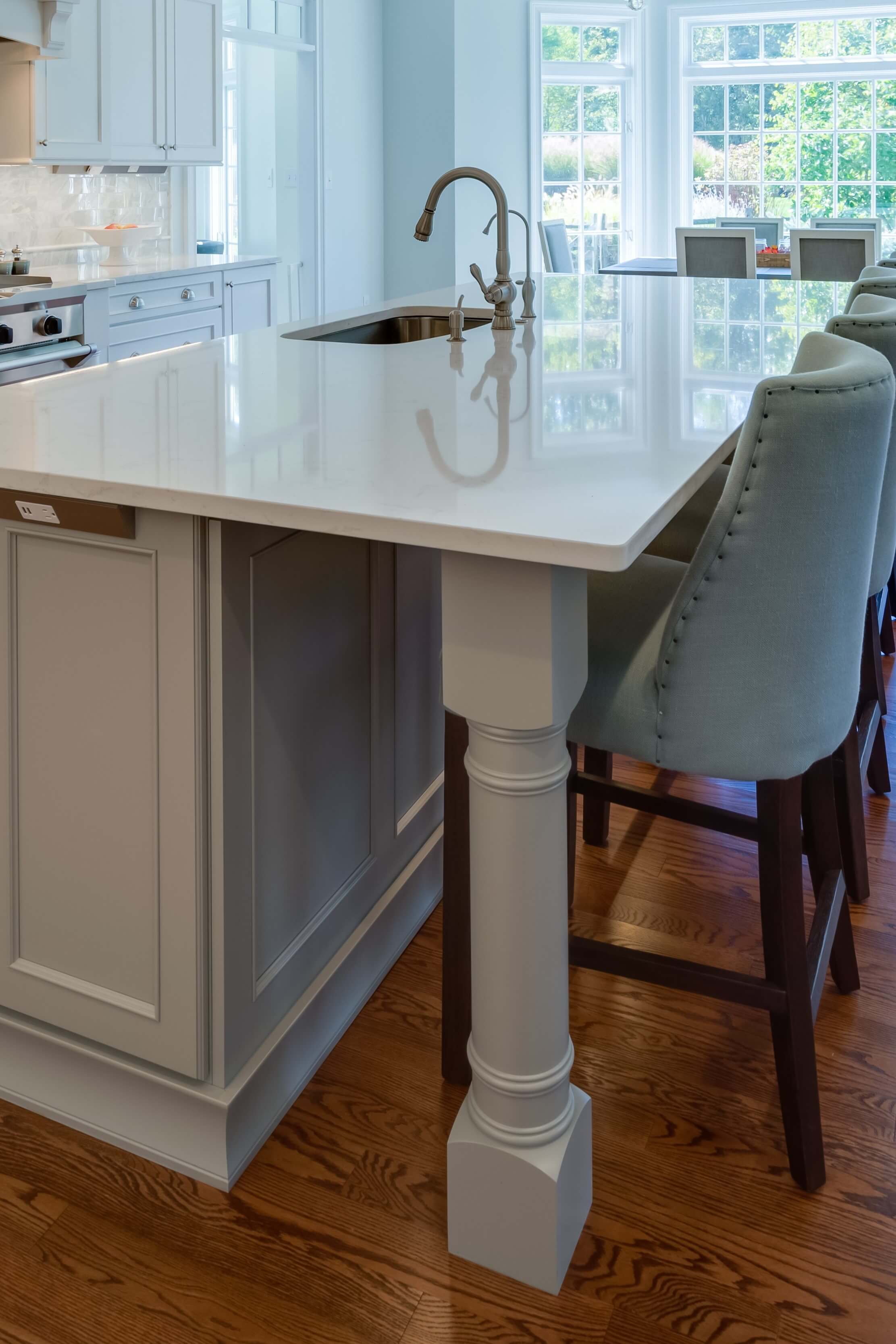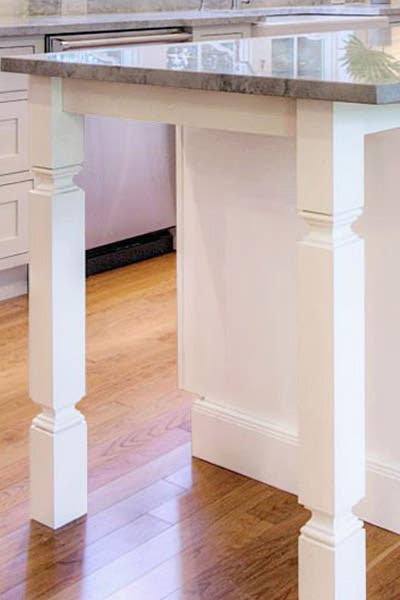Check Out Timeless Options in Classic Legs For Kitchen Island Layouts
Check Out Timeless Options in Classic Legs For Kitchen Island Layouts
Blog Article
Key Factors To Consider for Discovering the most effective Legs For Kitchen Island for Your Layout
When picking the perfect legs for your cooking area island, several essential factors to consider come into play that can substantially influence both functionality and appearances. The choice of elevation, product, and design need to straighten with your overall kitchen style to make certain an unified appearance.
Determine Your Style Preference
When selecting the optimal legs for your cooking area island,Establishing your design choice is critical. The legs of your cooking area island not only serve a useful objective but also contribute significantly to the total aesthetic of the room. Consequently, determining your design style-- be it modern-day, rustic, standard, or industrial-- is vital.
For a contemporary cooking area, take into consideration streamlined, minimalistic legs that match tidy lines and open rooms. Traditional cooking areas commonly favor transformed or luxuriant legs, which can include a touch of beauty and refinement.
Furthermore, think about the elevation and percentage of the legs in relation to the island's surface. Ultimately, your style preference will certainly affect not just the selection of legs yet likewise the general consistency of your cooking area's layout.
Pick the Right Product
Selecting the appropriate material for your kitchen area island legs is essential in making certain both durability and visual allure. Numerous products supply distinct advantages, and the choice typically shows your style preferences and functional requirements.
Wood is a popular choice, giving heat and convenience. It can be tarnished or repainted to match your kitchen area design, making it adaptable to various designs, from rustic to modern. Timber might need regular upkeep to maintain its appearance and stability.

If you seek a distinct touch, consider acrylic or glass materials. They can produce an impression of space and lightness in your cooking area, making them an excellent option for smaller sized locations - Legs For Kitchen Island. These choices may require cautious handling and upkeep to stay clear of scratches.
Ultimately, the material you select must straighten with your kitchen's overall style, making sure that the legs offer both decorative and practical functions.
Think About Elevation and Percentages
When making a kitchen island, height and percentages play a crucial role in ensuring performance and convenience,. The basic height for a kitchen area island typically varies from 36 to 42 inches, aligning with conventional counter heights or bar elevations, respectively. This dimension is important for harmonizing with bordering feceses and kitchen counters, enabling convenience of use during dish prep work and social interactions.
Furthermore, the island's proportions should complement the total cooking area design. A well-proportioned island needs to not overwhelm the area; rather, it ought to create a balanced visual. Take into consideration the ratio between the island's width and length, guaranteeing it provides sufficient surface area without crowding the cooking area. A general guideline is to keep a width of 24 to 48 inches, assisting in motion and access.
Additionally, the height of the legs or base can check affect the visual charm and capability. Taller legs might provide a more contemporary, airy feel, while much shorter ones can stimulate a typical, based appearance. Eventually, carefully taking into consideration height and proportions will certainly cause a kitchen island that is both functionally reliable and visually attractive, improving the total layout of the room.
Assess Security and Durability
A kitchen area island's legs should not only complement its height and percentages but likewise supply ample security and durability to sustain day-to-day tasks. The legs are necessary to the general performance of the island, as they birth the weight of the countertop and any type of extra lots, such as devices or cooking jobs.
When analyzing a knockout post stability, it is critical to consider the leg design and material. Tough steel or strong wood legs usually offer superior strength compared to lighter products like crafted timber or plastic. In addition, a bigger base can boost security, minimizing the danger of tottering or tipping during use.
Resilience is equally important; the legs should resist damage from day-to-day usage. Think about surfaces that protect against scrapes, damages, and wetness, especially in a kitchen setting. Assess the quality of building and construction, such as fastenings and joints, which can significantly influence the legs' long-lasting efficiency.
Eventually, purchasing well-crafted legs that prioritize security and toughness will guarantee your kitchen area island remains a trusted office for years ahead, improving your cooking experiences while preserving visual charm.
Consider Upkeep and Care
Upkeep and treatment are vital considerations for making sure the longevity and efficiency of kitchen island legs. When choosing legs, it is vital to examine the products utilized, as various options need differing levels of maintenance. For circumstances, wooden legs might require regular refinishing or securing to avoid dampness damage and scratches, while steel legs may need normal brightening to maintain their luster and protect against rust.
In addition, the finish put on the legs can influence maintenance needs. A high-gloss layer might be simpler to tidy yet can show scrapes and finger prints quicker than a matte finish. It is recommended to select products and coatings that enhance your way of living; for example, if you frequently host gatherings, go with resilient materials that can stand up to deterioration.
Furthermore, take into consideration the cleansing procedure included in preserving these legs. Smooth surface areas commonly need very little initiative, while complex styles may build up dust and grime, necessitating even more labor-intensive cleansing approaches. Legs For Kitchen Island. Eventually, factoring in the maintenance and care needed for your picked cooking area island legs will certainly not only enhance their visual allure yet likewise ensure their functional honesty with time
Verdict
To conclude, choosing the optimal legs for a cooking area island demands cautious consideration of various variables, consisting of design style, material selection, height, stability, and upkeep. Each element plays an essential role in making certain that the legs not only enhance the visual appeal of the cooking area however also supply the required assistance and toughness for everyday usage. A additional hints knowledgeable choice will eventually add to a practical and aesthetically pleasing kitchen area environment.
The legs of your kitchen area island not just serve a practical function however likewise add dramatically to the total aesthetic of the space.Upkeep and care are vital factors to consider for making sure the longevity and performance of cooking area island legs. Wooden legs might need routine refinishing or sealing to stop dampness damage and scrapes, while metal legs might need routine brightening to maintain their luster and protect against rust.
Eventually, factoring in the maintenance and care required for your picked cooking area island legs will not only boost their visual appeal however additionally guarantee their useful integrity over time.

Report this page